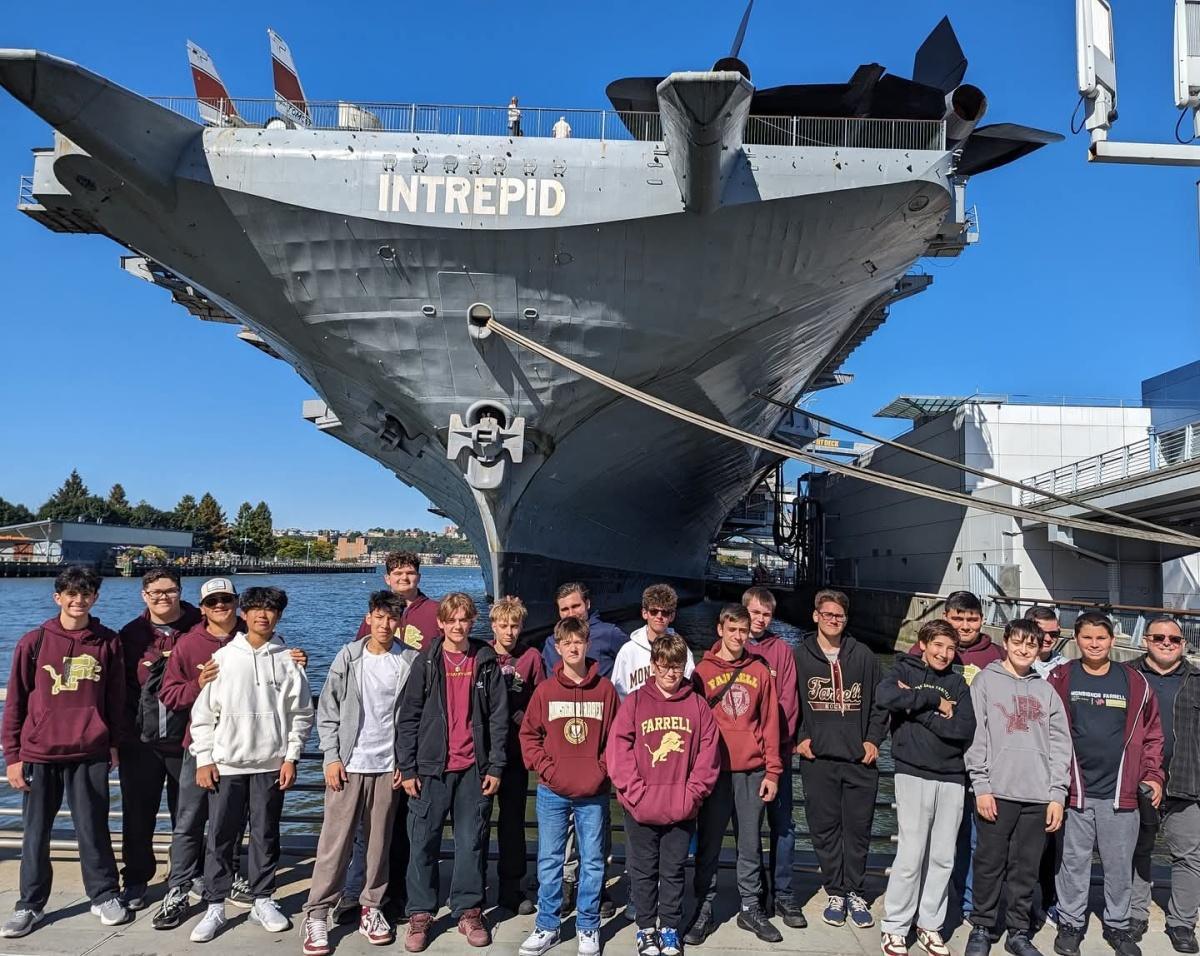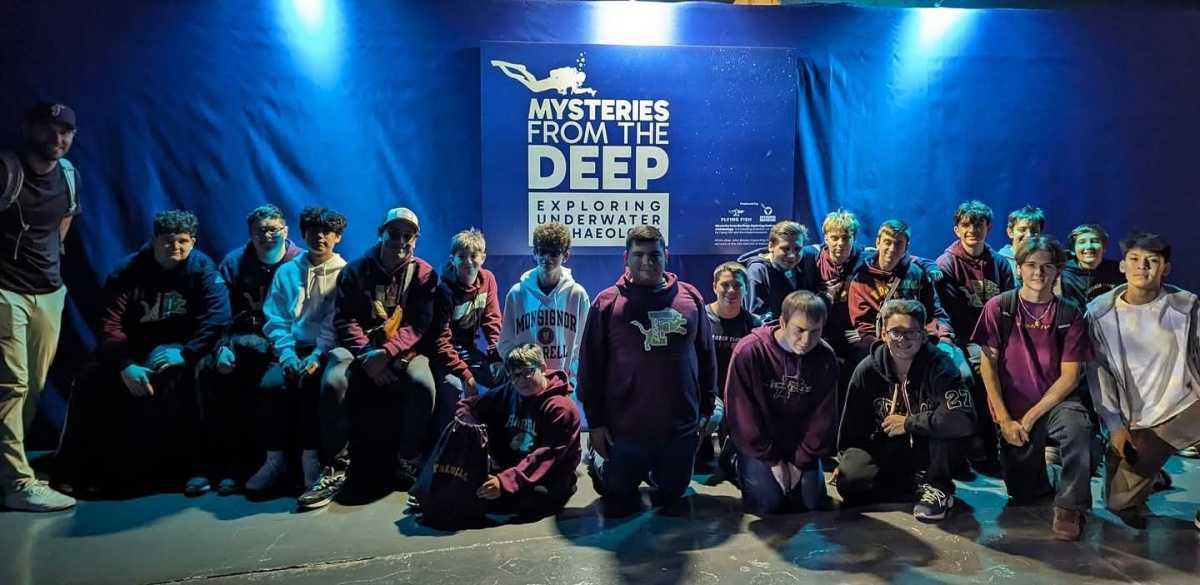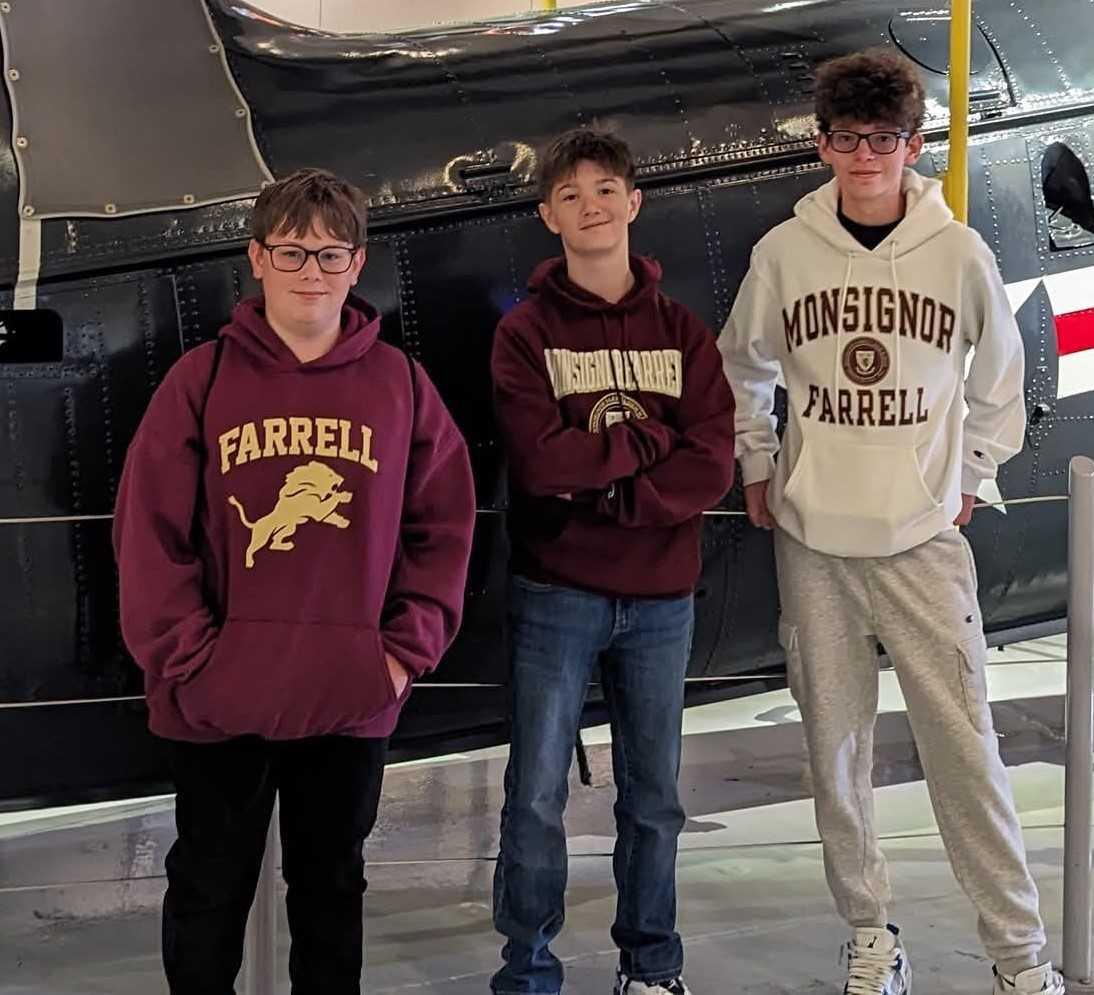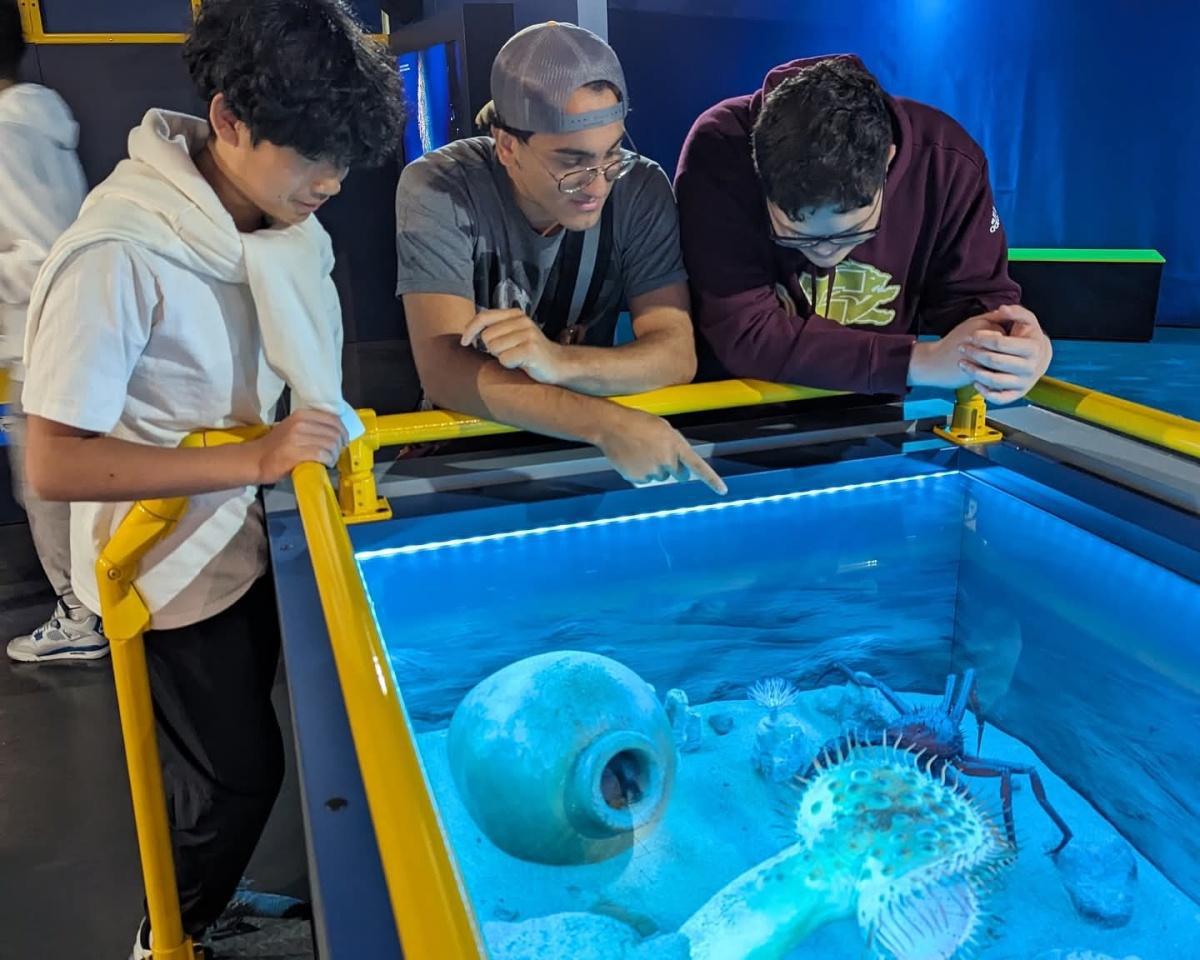Archeology Society Visits USS Intrepid
The Archeology Society, led by moderator Mr. Williams (far right), visited the USS Intrepid in Manhattan on October 1. (Photo courtesy of Mr. Williams)
Archeology Society Uncovers the Secrets of Underwater Discovery
When ships in the Navy are decommissioned, many of them are salvaged for scrap or used as target practice by other, newer vessels. The Intrepid, however, is different: the ship still serves, not at war, but on the frontlines of education.
Docked in Manhattan, the Intrepid now serves as a museum, featuring exhibits on its service in World War II and the Vietnam War, daily life aboard a navy vessel, and the science of underwater archaeology.
Commissioned on August 16, 1943, the USS Intrepid is an Essex-class aircraft carrier that operated in the Far East against Japan in World War II. Subjected to direct assaults against Japanese airfields and suffering from kamikaze attacks, the noble history of the Intrepid is preserved in one of the many exhibits it houses.
On March 15, 1974, the ship was decommissioned and then preserved as a museum.
During their trip to the USS Intrepid, students learned about real archeological missions that took place underwater. (Photo courtesy of Mr. Williams)
Among its many exhibits, the underwater archaeology section is what put the Intrepid on the Archaeology Society's radar. Here, cutting-edge technology is featured, exploring both the challenges of underwater archaeology and how advancements in technology have overcome these hurdles.
The stories of the last slave ship to arrive in the United States to the world’s oldest sunken city were once mysteries – but technology has since brought their truths to light, a light that shines in the Intrepid's exhibits.
With Mr. Williams and Mr. Acri, '16, as chaperones, the Archaeology Society prepared their visit.
(From left) Freshmen Daniel Galvin, William Aimone, and Luke Martinez stand in front of Navy HU-2 Helicopter. (Photo courtesy of Mr. Williams)
First, they toured the exhibition on October 1, which was host to various interactive displays, videos, and equipment. A state-of-the-art exosuit was on display, used by divers to withstand the immense pressure of the ocean.
In other instances, videos of real archaeological missions in the deep sea were shown. Interactive screens gave users insight into the discoveries made, such as the uncovering of ancient cities submerged long ago.
"I never realized how much history was hidden underwater," said Ethan Poznanski, '26.
Yet, the history hidden beneath the deep sea was not the only story to be told aboard the Intrepid. On the flight deck, decommissioned fighter jets and other military aircraft were on display. Some appeared to be replicas, and others authentic. Panels detailed each aircraft’s unique abilities, design, and service.
(From left) Sophomores Lucas Wu, Blake Borsques, and John Gutierrez explore one of the limited-time underwater-based exhibits on the USS Intrepid. (Photo courtesy of Mr. Williams)
On the bottom level, Hangar 1 was outfitted with many sections on varying topics. Some screens ran through videos of interviews with former crew members. Other sections featured models of battleship that served alongside the Intrepid. The range of topics was diverse, and every nook and cranny of the level was host to artifacts, stories, and interactive stations.
A favorite among the attendees were the real stories of the veterans who once served aboard the Intrepid. On the Hangar Deck, firsthand accounts of crew members who survived Kamikaze attacks are available for all to hear through video stations.
The accounts can be harrowing – for example, in November of 1944, two Japanese planes crashed into the hangar deck, igniting a massive fire and killing 69 crewmembers. These tales are a brutal reminder of the great sacrifices made on behalf of our freedom.
Each trip attendee was encouraged to roam freely across these exhibits after the section on underwater archaeology had been completed.
It is one thing to learn about history and the sciences in books, but the faithful men of the Archaeology Society take pride in making education a firsthand experience.
The Lion is Monsignor Farrell's student digital newspaper. To read more articles from The Lion, click here.





